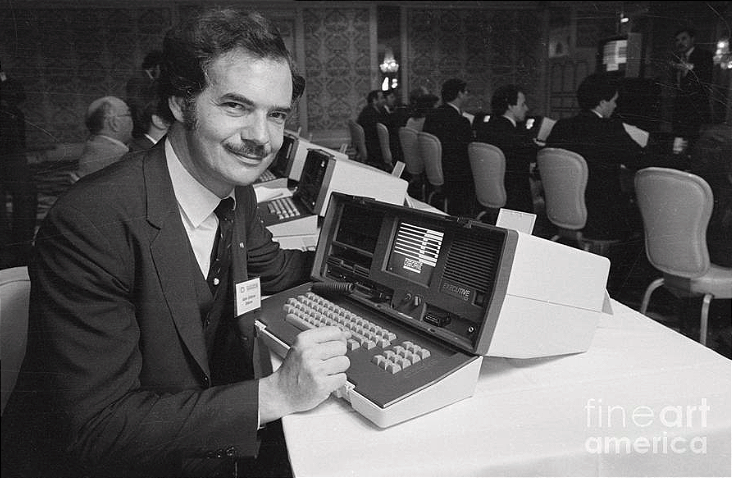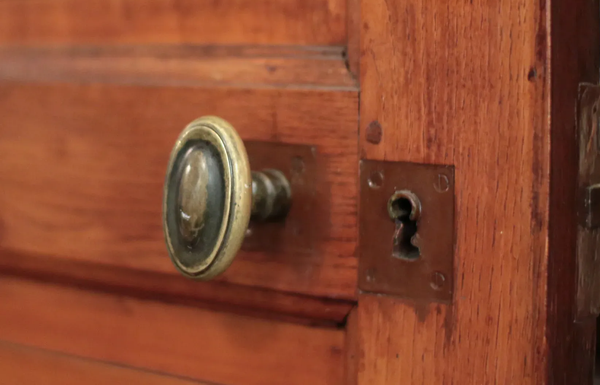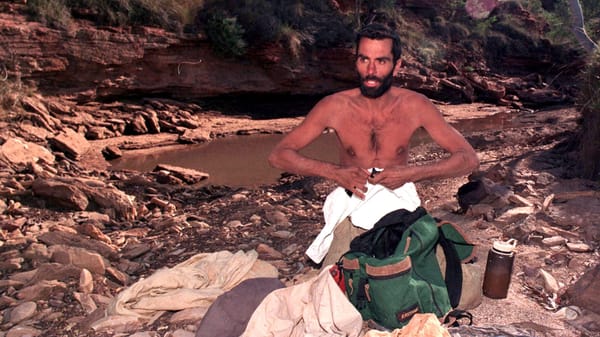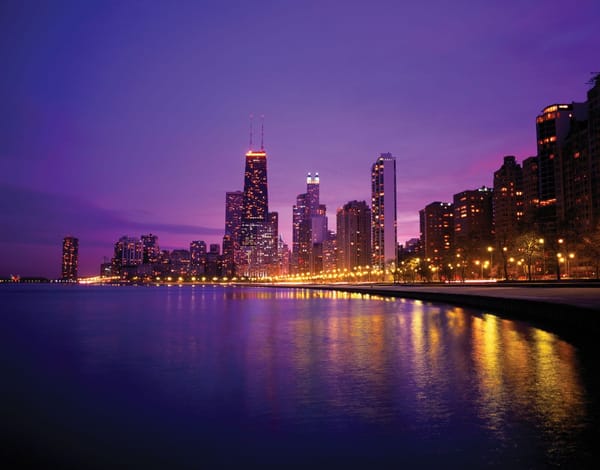The rise and fall of Steve Jobs’s greatest rival

From Every.to: "In 1981, journalists from around the world gathered at NASA’s headquarters to watch as the Voyager 2 spacecraft became the first man-made object to reach Saturn. In the aftermath of this historic event, the main attraction wasn’t NASA’s staff. It was fellow journalist Jerry Pournelle. Pournelle had something none of them had ever seen before: a portable computer, the Osborne 1, the first mass-market personal computer in history. Just six years earlier, when the Altair 8800 was unveiled, Steve Jobs recognized that the future of computing lay in the consumer market, not the hobbyist. But Jobs was not alone. He stood alongside someone who would go on to become a frenemy of sorts: That man was Adam Osborne, Jobs’s first true rival."
Here's why the state of Oklahoma is shaped like a panhandle

From JSTOR Daily: "More popularly known as the Panhandle, the three counties extending in a row west of the rest of the “pan” of the state are one of those geographical quirks of history that really jump off of the map. The Panhandle is also the location of the only county in the country with four states on its borders: Cimarron County, the westernmost part of the state, borders Colorado, Kansas, Texas, and New Mexico. Today fewer than 1% of Oklahomans live in the 168 x 34 mile-wide strip. It was Spanish territory until 1821, when it became part of independent Mexico. The Republic of Texas claimed it when declaring independence. But then, upon entering the Union as a slave state in 1845, Texas surrendered its claim to the region because slavery was prohibited north of 36°30′ latitude by the Missouri Compromise of 1820."
Watch this fish-cam and when you see one, ring the fish doorbell

From the NYT: "When friends visit Aliza Haskal’s apartment, she offers them gripping entertainment: a live feed from a camera six feet below the surface of a cloudy river in the Netherlands. As soon as a fish glides by, Ms. Haskal hurries to press the website’s sole button. It is a doorbell — specifically, a doorbell for fish. The button helps alert a worker in the Dutch city of Utrecht to crank open a dam, allowing the fish to wriggle toward shallower water where it can spawn. The livestream, a modest municipal project to assist fish migration, has become an unexpected hit far beyond Utrecht. In the four years since its debut, it has drawn an international audience eager to help fish reach warmer waters."
Editor's note: If you like this newsletter, please share it with someone else. And if you really like it, perhaps you could subscribe, or contribute something via my Patreon. Thanks for being a reader!
Why there are billboards in Chicago that dispense ketchup

From Block Club Chicago: "There are some Chicago restaurants that will show you the door if you ask for ketchup. So Heinz is helping out ketchup-loving Chicagoans by putting up small billboards that dispense the condiment outside famous local restaurants that refuse to serve ketchup. Passersby can smack a ketchup bottle attached to the boards, and packets of Heinz ketchup will fall out. Chicagoans can also nominate restaurants that don’t serve Heinz ketchup to get one of the boards on the website SmackForHeinz.com. It’s a time-honored tradition in Chicago to rib people who put ketchup on hot dogs, and some restaurants honor the history by refusing to offer the condiment to customers."
Roman-era bone container found filled with potent hallucinogenic medicine

From Science.org: "To ancient physicians, black henbane was a source of both fascination and fear. In the right amount, this poisonous plant was a mild narcotic, capable of relieving pain and helping with difficult pregnancies. Yet ingesting too much, one Roman author wrote, could lead to “alienation of the mind or madness.” Researchers report finding a cache of Roman-era black henbane from the first century C.E. hidden within the hollows of a goat or sheep bone from the Netherlands. They almost missed the unique find. While sorting and measuring more than 86,000 animal bones found at a 2000-year-old farmstead in the Netherlands, an archaezoologist didn’t notice at first that one of these bones was sealed at one end by a small birch tar plug."
How the audience reacted to composer John Cage's four minutes of total silence

From Critic at Large: "On August 29, 1952, the pianist David Tudor walked onstage at the Maverick Concert Hall to premiere a new composition by the American experimental composer John Cage. Tudor sat at the piano and opened the lid, after which he did nothing until he closed it over a minute later. He repeated this sequence twice, at which point the performance, which had taken four minutes and thirty-three seconds, was finished. The audience, though accustomed to avant-garde works, reacted with disbelief. Most people did not understand what they had just witnessed, and some did not realize anything had actually happened. Reaction to Cage’s piece was swift and largely critical, with many people calling it a musical joke or even an insult."
Snow leopard chases his prey off a cliff
this is one of the most insane things I’ve ever seen pic.twitter.com/ZJ3IlR59Sp
— Nature is Amazing ☘️ (@AMAZlNGNATURE) March 31, 2024
Acknowledgements: I find a lot of these links myself, but I also get some from other newsletters that I rely on as "serendipity engines," such as The Morning News from Rosecrans Baldwin and Andrew Womack, Jodi Ettenberg's Curious About Everything, Dan Lewis's Now I Know, Robert Cottrell and Caroline Crampton's The Browser, Clive Thompson's Linkfest, Noah Brier and Colin Nagy's Why Is This Interesting, Maria Popova's The Marginalian, Sheehan Quirke AKA The Cultural Tutor, the Smithsonian magazine, and JSTOR Daily. If you come across something interesting that you think should be included here, please feel free to email me.



